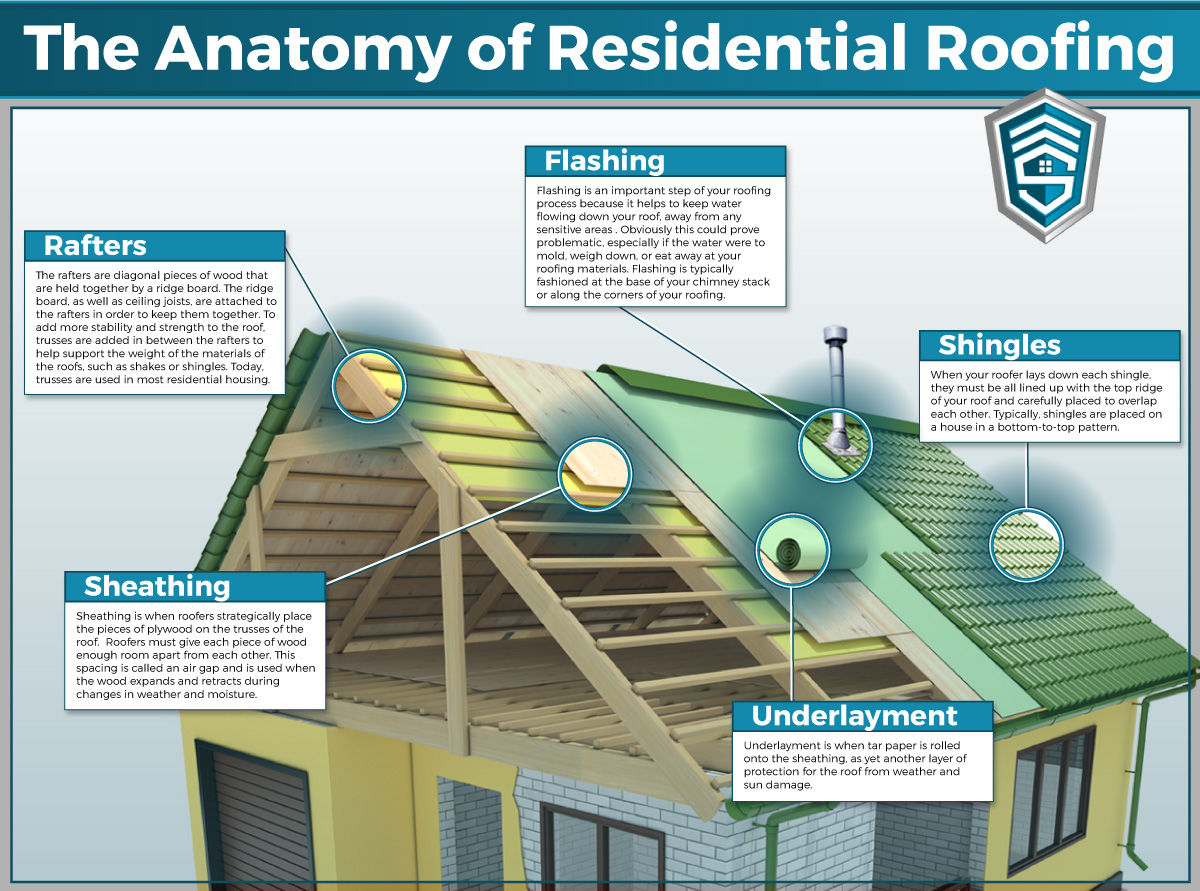Stopping Working To Deal With Roof Air Flow May Trigger Significant Damage; Explore The Important Aspects That Contribute To A Successful Installment And Shield Your Economic Dedication.
Stopping Working To Deal With Roof Air Flow May Trigger Significant Damage; Explore The Important Aspects That Contribute To A Successful Installment And Shield Your Economic Dedication.
Blog Article
Web Content Writer-Lassiter Manning
When you're tackling a roof project, you might not believe much regarding roof ventilation, but it's even more important than you recognize. Reliable air flow assists manage temperature and dampness in your attic, avoiding troubles like mold and structural damages. By comprehending just how to design and set up a balanced ventilation system, you can improve energy efficiency and prolong the life-span of your roof products. So, what are the essential variables to take into consideration during setup that can make all the distinction?
Significance of Roof Air Flow
Roof covering ventilation plays a crucial function in preserving the general health and wellness of your home. By permitting fresh air to circulate via your attic, it assists regulate temperature and moisture degrees. This equilibrium is vital to protect against warm build-up during warm months, which can result in increased energy expenses as your a/c burns the midnight oil.
In addition, proper ventilation dramatically reduces the risk of moisture-related problems like mold and mildew and mildew. If moisture levels rise, your home's architectural stability can be compromised, leading to expensive repair work. You would not want to take care of decomposing timber or distorted roof covering products, right?
In why not find out more , sufficient ventilation prolongs the lifespan of your roofing system. When warmth and dampness are kept in check, your roof can carry out optimally, stopping early wear and tear. This indicates fewer migraines and costs down the line.
How Roofing Air Flow Works
Efficient roof covering air flow relies upon the natural movement of air to produce a balance between consumption and exhaust. When you set up vents, you're basically enabling fresh air to enter your attic room while enabling hot, stagnant air to run away. This procedure helps regulate temperature level and dampness levels, preventing problems like mold and mildew growth and roofing damages.
Consumption vents, generally located at the eaves, attract great air from outdoors. On the other hand, exhaust vents, located near the ridge of the roofing, allow hot air increase and leave. The distinction in temperature develops an all-natural air flow, called the stack impact. As warm air rises, it produces a vacuum that pulls in cooler air from the lower vents.
To enhance this system, you require to make sure that the consumption and exhaust vents are properly sized and placed. If the consumption is restricted, you will not attain the preferred ventilation.
Furthermore, insufficient exhaust can trap warm and moisture, bring about potential damages.
Key Setup Considerations
When installing roof air flow, numerous vital considerations can make or damage your system's efficiency. First, windows near me require to assess your roof covering's style. The pitch, form, and products all affect air movement and air flow selection. Make certain to pick vents that fit your roof covering kind and neighborhood environment conditions.
Next off, take into consideration the placement of your vents. Preferably, you'll want a well balanced system with intake and exhaust vents positioned for optimum air flow. Place consumption vents short on the roof covering and exhaust vents near the height to urge an all-natural circulation of air. This setup aids avoid moisture accumulation and advertises power efficiency.
Do not ignore insulation. Correct insulation in your attic prevents warm from getting away and maintains your home comfy. Make certain that insulation does not block your vents, as this can prevent airflow.
Last but not least, consider upkeep. Select ventilation systems that are easy to gain access to for cleansing and examination. Regular maintenance ensures your system continues to operate efficiently in time.
Final thought
Finally, roof air flow is vital for an effective installment. By making sure proper airflow, you can protect against heat accumulation and wetness concerns that bring about pricey damage. When you tactically placement intake and exhaust vents, you improve power performance and lengthen the lifespan of your roof covering. Keep in mind, a well-ventilated roofing not only safeguards your financial investment yet likewise enhances your indoor air high quality. So, prioritize air flow to ensure a resilient and economical roofing system for your home.
